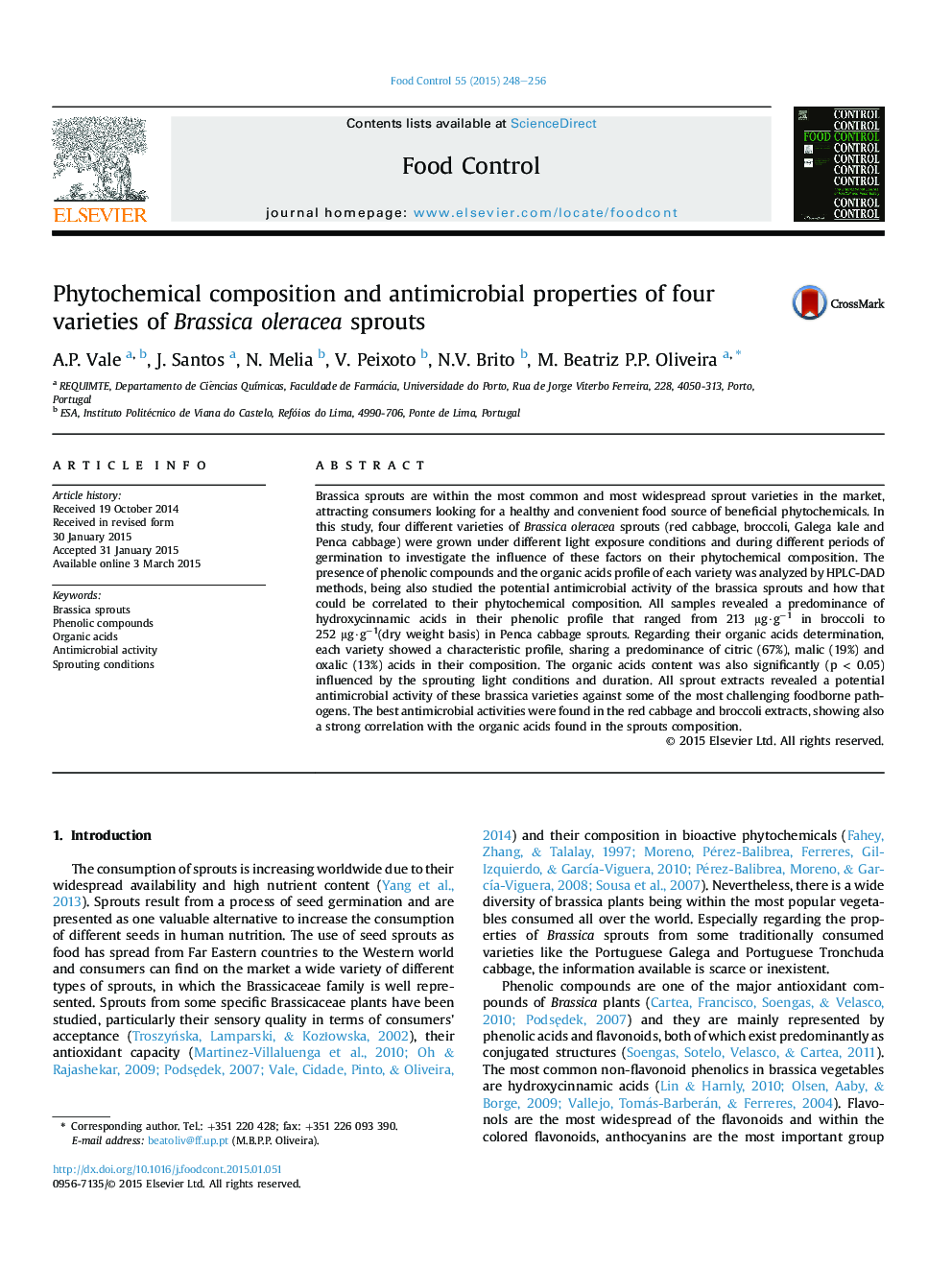| Article ID | Journal | Published Year | Pages | File Type |
|---|---|---|---|---|
| 4559309 | Food Control | 2015 | 9 Pages |
•All Brassica oleracea sprouts studied revealed a predominance of hydroxycinnamic acids.•Organic acids profile was influenced by sprouting conditions and brassica variety.•Sprouts extract shown a potential antimicrobial activity against foodborne pathogens.•Red cabbage and broccoli extracts had the best antimicrobial activities.•A strong correlation was found between antimicrobial activity and the organic acids.
Brassica sprouts are within the most common and most widespread sprout varieties in the market, attracting consumers looking for a healthy and convenient food source of beneficial phytochemicals. In this study, four different varieties of Brassica oleracea sprouts (red cabbage, broccoli, Galega kale and Penca cabbage) were grown under different light exposure conditions and during different periods of germination to investigate the influence of these factors on their phytochemical composition. The presence of phenolic compounds and the organic acids profile of each variety was analyzed by HPLC-DAD methods, being also studied the potential antimicrobial activity of the brassica sprouts and how that could be correlated to their phytochemical composition. All samples revealed a predominance of hydroxycinnamic acids in their phenolic profile that ranged from 213 μg·g−1 in broccoli to 252 μg·g−1(dry weight basis) in Penca cabbage sprouts. Regarding their organic acids determination, each variety showed a characteristic profile, sharing a predominance of citric (67%), malic (19%) and oxalic (13%) acids in their composition. The organic acids content was also significantly (p < 0.05) influenced by the sprouting light conditions and duration. All sprout extracts revealed a potential antimicrobial activity of these brassica varieties against some of the most challenging foodborne pathogens. The best antimicrobial activities were found in the red cabbage and broccoli extracts, showing also a strong correlation with the organic acids found in the sprouts composition.
